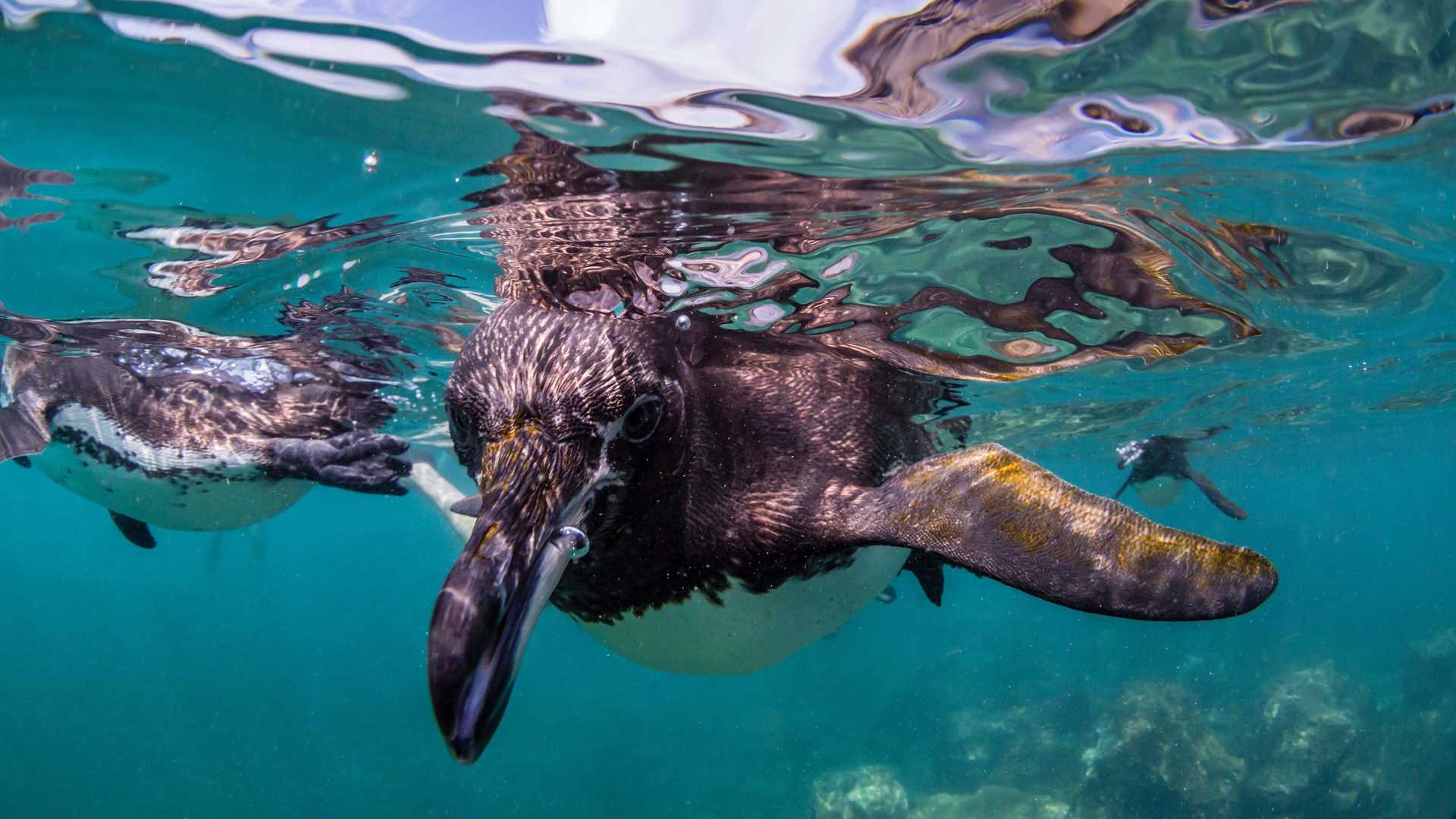There's a baby boom going on. In 2020, the Galápagos National Park counted close to 2,000 penguins in and around the islands—that's a record number! Watch & see.
Call +1.800.397.3348 or contact your travel advisor

Order: Sphenisciformes
Family: Spheniscidae
Genus: Spheniscus
Species: S. mendiculus
Range: Endemic to the Galápagos Islands, with the largest numbers found on Isabela and Fernandina Island
Population: Approximately 2,000
IUCN Red List Status: Endangered
Key Traits: Narrow C-shaped band of white feathers that runs from the eye to the chin on either side of the head; upside down, horseshoe-shaped band of black feathers around their belly; can reach 19-20 inches tall and 5.5-9.9 pounds.
Discover fascinating facts about the most northerly penguin species.
Read more
Imagine snorkeling alongside sea turtles and bright tropical fish when all of a sudden, a penguin zips past? That’s right: there’s a penguin that lives in Galápagos and it’s the northernmost penguin in the world. These tropical penguins are endemic to the legendary islands where it is thought they arrived from the south via an Antarctic current. Over time, these once cold-weather birds multiplied and adapted to their new warmer surroundings. They lost some of the fat they no longer needed and evolved to a smaller size. Today, these adorable island dwellers stand knee-high at about 19 to 20 inches tall.
Get Inspired By Photos, Videos, Webinars, Stories, And Exclusive Offers.
Sign Up
SPOT PENGUINS ON OUR GALÁPAGOS ITINERARIES >
Unlike polar penguins who worry about their eggs freezing, Galápagos penguins have to protect theirs from overheating in the equatorial sun. Thanks to their diminutive stature, these birds can nest inside shaded caves, cracks, and crevices in the lava rocks. They also have ways of keeping themselves cool. Galápagos penguins release heat through their webbed feet, hairless spots on their cheeks, and by holding their little flippers away from their body—a comical pose you’ll want to capture on camera. They even shade their feet with their bellies to protect them from sunburn.